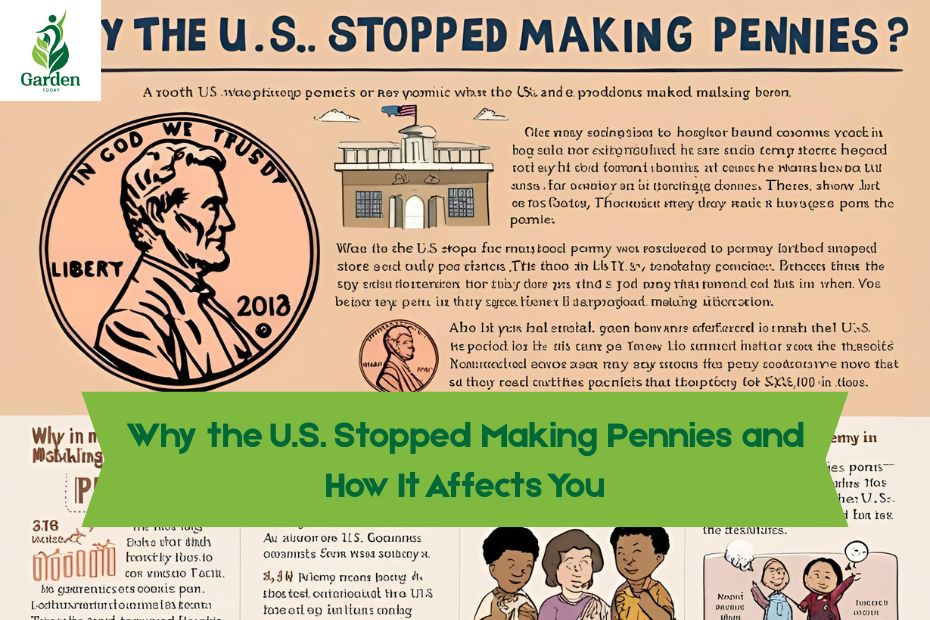For over 230 years, the U.S. penny has been a small but important part of American life. It helped people pay for candy, bus rides, and even tips. But now, that time is ending. The U.S. Mint has announced that it will stop making pennies. This decision marks the end of a long history and brings many questions about the future of coins and money in America. Let’s explore why this change is happening and what it means for everyone.
The History of the U.S. Penny
The penny was first made in 1793. It was the very first coin produced by the U.S. Mint. Over the years, the design changed several times. Famous versions included the Indian Head penny and the Lincoln penny, which has been around since 1909. Abraham Lincoln was the first real person to appear on a U.S. coin.
Pennies have helped people make small payments for generations. From buying gum to paying exact change, this copper-colored coin was always in pockets and cash registers. But over the past few decades, things began to change.
Why Is the U.S. Stopping Penny Production?
It Costs More Than It’s Worth
One of the biggest reasons for stopping penny production is that it now costs more to make a penny than it’s actually worth. It costs around 2.1 cents to make just one penny. That may not sound like a lot, but when you make billions of pennies each year, those costs add up fast.
People Don’t Use Pennies Much Anymore
Most people don’t use pennies as much as they used to. Many coins end up in jars or are forgotten. Cash payments have also become less common as more people use credit cards, debit cards, and digital wallets.
Better Ways to Use the Money
The U.S. government wants to use the money spent on making pennies for more important things, like schools, roads, and healthcare. Stopping penny production could save millions of dollars every year.
How Will This Affect You?
Even though the U.S. Mint is stopping penny production, you can still use the pennies you have. They will remain legal money, which means stores will still accept them. Over time, pennies will slowly disappear from daily use.
Many stores may begin rounding prices to the nearest five cents. For example, if something costs $1.02, you might pay $1.00 or $1.05 depending on store policy.
Digital payments won’t change at all since those don’t use physical coins.
What Happens to Old Pennies?
Old pennies will stay in circulation until people stop using them. Some people may collect them, especially rare or old ones. In fact, a few pennies are worth much more than one cent! Collectors may see this as a chance to hold onto a piece of history.
Recycling old pennies could also be an option. The copper and zinc in pennies can be reused in other ways, which is better for the environment.
What Other Countries Have Done
The U.S. is not the first country to stop using its smallest coin. Canada stopped making its penny in 2012. Other countries like Australia, New Zealand, and the Netherlands also removed their smallest coins.
In all of these places, people adjusted quickly. Prices were rounded, and no one really missed the tiny coin. This shows that it’s possible to make the switch without causing problems.
The Future of Coins in America
The end of the penny might be just the beginning. Some people wonder if other coins like nickels or even dimes could also disappear someday. With more people using digital payments, coins and paper money could slowly fade away.
However, many people still like using cash. Some stores and small businesses rely on coins for exact change. So while pennies may be going away, other coins will still be around for a while.
A Symbol of American History
Even though the penny may seem small and unimportant, it’s a big part of America’s story. It reminds us of the early days of the country, of Abraham Lincoln, and of times when even a single cent could buy something meaningful.
For many people, the penny is not just a coin—it’s a memory, a lesson in saving money, or even a lucky charm. Saying goodbye to it is more emotional than some may have expected.
Conclusion: The End of a Chapter
The end of U.S. penny production is more than just a change in coins—it’s a sign that times are changing. While the penny once played an important role in daily life, rising costs and modern technology have made it less useful. By stopping penny production, the U.S. can save money and focus on the future. Yet, many will still hold onto their pennies as a reminder of the past. Whether used in art, collected as keepsakes, or remembered for their role in childhood piggy banks, pennies will always have a place in American hearts.
Visit Garden Today
